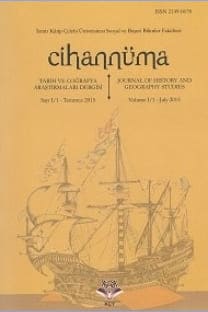Kent ve Devlet Arasında: 18. Yüzyıl Selanik Kırsalında Güç ve Sermaye Dinamikleri
Akdeniz’deki liman kentleri anlatılarını eleştiren bu çalışma, ekonomik dönüşüm, siyasal hiyerarşi, erken modern Osmanlı taşra yönetimi açısından Selanik’te değişen toplumun unsurlarını incelemektedir. On sekizinci yüzyıl taşra toplumunda meydana gelen değişimler çok farklı dinamiklerin etkileşimi sonucu ortaya çıkmıştı. Bu dinamikler, reayanın hareketliliği, kırsalda ortaya çıkan siyasi güçler, büyük toprak sahipliliğinin artışı ve paramiliter kuvvetlerin gücünün artışı idi. Selanik ve çevresindeki kentlerin etrafındaki kırsal alanda belirginleşen güç ve mülkiyet ilişkilerine yeni bir bakış sunan bu çalışma, bu anlamda erken modern dönemdeki kır-kent ilişkilerinin yeniden yorumlanmasını amaç edinmektedir. Bunun yanında, şehir tarihçiliğini domine eden hinterland, kırsaldaki kent hâkimiyeti ve portfolyo kapitalistler gibi kavramların yeniden sorgulanmasını önermektedir. Bu çalışma, kentteki Avrupalı tüccarların ya da komprador burjuvanın stratejilerinden ziyade, toprak sahipleri, köylüler ve Osmanlı merkezi arasındaki ortaya çıkan yeni ilişki ağlarının Selanik’teki erken modern ekonomik büyümeyi ve siyasi yapıları belirlediğini iddia etmektedir.
Anahtar Kelimeler:
Selanik, kent-kır ilişkileri, erken modern dönem, çiftlik, Osmanlı liman kentleri
Between City and State: Power and Capital Relations in the Eighteenth-Century Salonikan Countryside
By challenging Mediterranean port-city narratives, this study analyzes the changing nature of Salonikan society from the perspective of economic transformation, political hierarchy, and the workings of the early modern Ottoman provincial system. The eighteenth-century metamorphosis of provincial society was set by the interaction of several coexisting and complex dynamics: the extensive peasant mobility, the rise of local powers in the countryside, the spread of large agricultural estates in the countryside, and the rising power of local paramilitaries. A reconceptualization of power and property relations in the rural areas adjacent to Salonikan towns would not only provide a new perspective into city-country connections in the early modern era, but also help us to rethink the concepts of hinterland, urban domination and portfolio capitalists in the Ottoman provincial setting. This study thus suggests that rather than the activities of European merchants and comprador bourgeoisie, the emerging alliances between landed elite, peasants, and the imperial center shaped the contours of early modern growth and political structures in Salonika.
- ISSN: 2149-0678
- Yayın Aralığı: Yılda 2 Sayı
- Başlangıç: 2015
- Yayıncı: İzmir Katip Çelebi Üniversitesi
Sayıdaki Diğer Makaleler
Ateşli Silahlar Çağında İslam İmparatorlukları: Osmanlılar, Safeviler, Babürlüler
Figen Atabey, Çanakkale Muharebelerinin Deniz Cephesi
Yahya Araz, 16. Yüzyıldan 19. Yüzyıl Başlarına: Osmanlı Toplumunda Çocuk Olmak
Mustafa Arif Efendi’nin Selanik Yılları: 19. Yüzyılda Osmanlı Taşrasında Burjuvazinin Oluşumu
Kösem Sultan’a Ait Bir Muhallefât Kaydı
Özlem Kumrular, Kösem Sultan: İktidar, Hırs, Entrika, İstanbul
